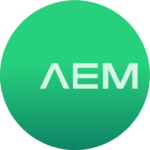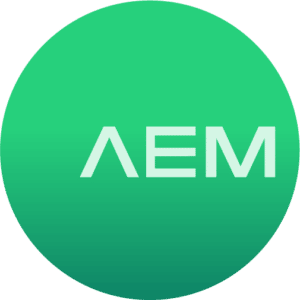Troubleshooting Wired and Wireless Networks In Higher Education
Network infrastructures within higher education can be far more complex compared to other business verticals. Often, a mixture of traditional enterprise-grade technologies is combined with bleeding edge infrastructure components that expand educational possibilities within science, technology engineering and math (STEM) fields. Added to this is the fact that school grounds commonly span multiple buildings and host faculty/staff in housing or dorms around the clock. Thus, the use of public safety/IoT technologies are often higher than those deployed within even the most sophisticated smart buildings. In this Top Tips brief, we’ll look at five copper and fiber testing, troubleshooting and maintenance situations that IT staff commonly find when working in higher-education campuses.
Long Haul Fiber Between Buildings
At medium- to large-sized universities that span multiple buildings or city blocks, fiber is run between facilities either above or below ground to create a single unified LAN. Over time, this fiber can experience a multitude of issues that can cause network degradations or failures. Examples include fiber cuts, animal infestations, vandalism and dust/ debris that can get into fiber connectors.
A test tool that supports both single and multimode fiber and a wide range of connector types can be useful for troubleshooting these critical fiber runs. For example, a visual fault locator (VFL) test can be performed on a questionable run to help administrators quickly identify any breaks in the fiber, and a fiber scope can identify dirt that could be causing a performance degradation. Other useful test tool measurements can include:
High Tech Data Centers with Multi-gig Ethernet and Fibre Channel
A great deal of advanced research occurs every day on most higher education campuses. Bleeding edge computing hardware is commonplace within school data centers. These often require the need for multi-gigabit copper/ fiber connections in addition to high-speed storage area networks (SANs) that use fiber channel technologies for improved data transport performance.
For higher-ed data centers, a modular test tool is required that can run verification and certification tests for both copper and fiber. Additionally, a tool that can verify the maximum speed limitations for fibre channel derived data is especially useful as fibre channel technology standards can now reach speeds up to 128 Gbps.
IoT Deployments Using The Latest in Cabling Technologies
Bleeding edge technologies on university campuses are not only relegated to the data center. Commercial, enterprise and custom-built IoT devices are being deployed on campuses both indoors and out. In some cases, these IoT devices require the latest in cabling technologies for both power delivery and network connectivity. To ensure proper operation, an IoT deployment using new advancements in cabling also require tools that can verify connectivity/performance and power delivery capabilities for deployment and troubleshooting purposes.
One example is single pair Ethernet (SPE). This IEEE 802.3cg standard can transmit and receive Ethernet frames at 10 Mbps full duplex capacity using just 1 pair of copper. While a 10 Mbps maximum throughput rate may seem low, it’s often sufficient for low-bandwidth IoT use cases. Additionally, as SPE technology evolves, it’s expected that the standard will soon reach 1Gbps over a single pair.
In addition to maximum speed, SPE touts the following impressive benefits:
For these reasons, SPE can be an ideal choice for IoT projects that require hundreds or thousands of sensors to be placed across a campus. The small and light cable footprint with the ability to run very long runs with power delivery is quite impressive and useful in many situations.
Hybrid powered fiber is another emerging cable technology example where universities require cabling types that may differ from the norm. A hybrid fiber cable consists of two fiber strands for transmit and receive bundled with a pair of copper wires for power delivery to a remote device. These cables can be used in situations where networking equipment or endpoints such as outdoor UHD surveillance cameras are required at a certain location on campus where power does not exist.
Increased Use of High-Power PoE
The need for high-power PoE on higher education campuses is growing exponentially. Examples include the deployment of the latest Wi-Fi 6 and 6E access points, pan-tilt-zoom (PTZ) surveillance cameras and numerous public safety and smart building IoT.
Administrators often struggle when delivering sufficient power over copper data plants that have been around for a decade or longer. To avoid deployment headaches, test tools that can not only verify that sufficient power can be delivered to a PoE endpoint up to IEEE 802.3bt standards – but also that it can continue to deliver the same amount of power over a sustained period of time as the copper wiring within the cable heats up.
The Need for Modular and Portable Troubleshooting Tools
Finally, understand that many college campuses around the country span hundreds to thousands of acres. For IT administrators troubleshooting in the field, having the right tools on them at all times is an absolute must. Cable test tools come in a host of form factors and capabilities. In many cases, multiple tools are needed to test/troubleshoot the various copper/fiber types and connectors. Because of this, having to haul around multiple test tools can become a serious problem from a mobility perspective.
There are vendors, however that offer modular test tools which cover the entire range of cable types, tests and test result information that any university IT technician might require. Some tools even include features that serve as portable wired and Wi-Fi testers. Capabilities within this troubleshooting toolset include:
- Ping/Tracerout
- Switch discovery
- Information (switch make, model port VLAN, etc)
- Subnet/VLAN visibility
- Network traffic generator
- Wi-Fi authentication tests
- Wi-Fi signal strength
- Wireless roaming verification
Thus, for higher-ed environments, it’s not only about the test capabilities of the tool – but also the modularity and overall ease of portability while in the field.






